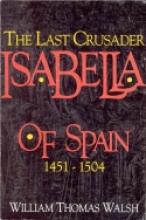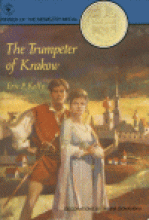15th century
Grisly Grisell
Grisly Grisell is one of the newly reprinted titles from Lepanto Press' Knights and Ladies series. It is a tale of adventure and good romance. Patience, perseverance and kindness are strong and noble virtues of Grisell, which endear her to others, including the reader.
What sets this book apart from others are the Catholic overtones. For example, Grisell has a positive experience growing up in a convent. In fact, she was hoping to be a nun, when her lack of a dowry and an unsympathetic Abbess (of course she is Spanish and this is British historical fiction) prevented it. Although the Catholic Church is presented, overall, very positively, this particular incident, when the Pope appoints a greedy relative to take over the convent, may warrant some discussion to clarify that there have been some terrible Popes in history, but that the Holy Spirit is still with the Catholic Church. Even though Grisell is prevented from becoming a nun, she is not embittered by the incident against the Church. She patiently accepts it as a cross to bear.
Although the story is fast paced and of interest to older readers (Ages 13-up), it could be read aloud to a younger audience. My only difficulty with the story is that it sometimes was confusing to know, in the larger scheme of the War, who was on whose side. Even if the reader is somewhat muddled, the story does eventually get worked out and the theme within the story carries the reader to the end.
Men of Iron
This is a stirring tale in the tradition of the Knights of the Round Table and Ivanhoe. It takes place in the early 15th century. Myles Falworth is a young boy brought up in a poor but noble household, late in the reign of Henry IV of England. His father, a supporter of Richard II, has been unfairly accused of treason and outlawed. As a youth, Myles is sent as squire to the household of an old family friend, where his unpolished manners, fierce strength of will and impulsive actions win him both loyal friends and fervent enemies.
Over the course of time he finds that he is being prepared to clear his father's name. The first part of the book tells about his training in the chivalric arts of war; the second part tells of his young adulthood. In the final encounter with his family's bitter enemy, the stakes are high; not only his father's good name and the family fortune, but also his future happiness with his chosen bride, and his very life.
Men of Iron is written and illustrated by Howard Pyle, who lived around the turn of the century and was also the author of many other classics such as Otto of the Silver Hand, The Merry Adventures of Robin Hood, several Arthurian romances, and Garden behind the Moon. The language is old-fashioned and complex by today's standards, and some passages of historical detail might slow this book down as a read-aloud, but the story is involving and inspiring. I think it could be read aloud to a child as young as nine, and a 12 to 16 year old would enjoy reading it alone.
The Last Crusader: Isabella of Spain
Queen Isabella (the Catholic) of Spain is one of the most influential and controversial women in history. She and her husband were responsible for supporting Columbus' voyages to the New World, the re-conquering of all of Spain from the Moors, the expulsion of the Jews, and the establishment of the Spanish Inquisition. Her daughter, Catherine of Aragon, was the unfortunate first wife of King Henry VIII of England (who founded the Anglican church because he didn't accept the Pope's refusal to grant him an annulment of his marriage to Catherine). The story is fast-paced and gripping (as well as complex), but also very sad and even disturbing at times. It's an important period of history for Catholic to understand as many aspects of this story are frequently used to attack the Church. Reading the whole story will also dispel some common myths about history in general - particularly ones that try to make blanket statements about history and assumptions that as history progresses things always get worse. Recommended for upper high school or adult.
This book mentions at least one disturbing story of violence against a child that appears to follow the pattern of anti-Jewish myths debunked by the Church as early as Gregory X's document of 1272 on "Papal Protection of the Jews". The document can be found here: http://www.ewtn.com/library/PAPALDOC/G10JPROT.HTM In addition to reading this document (which particularly highlights problems with Christian violence against the Jews), further discussion and research are recommended on this topic.
The Merchant's Mark
The Merchant's Mark is a mystery set, in England in 1493, against a rich historical background of a family involved in the wool industry. The author weaves much detail about the wool and cloth trades into the story. Many traditions, celebrations and religious practices are also included, giving the reader a very nice picture of life at that time - particularly their strong Catholic culture. This might be a good book to read alongside a study of Christopher Columbus. Not only does the story take place at the time of his voyage, but the information about the cloth trade is interesting because Columbus came from a cloth-making family.
The Second Mrs. Gianconda
The Second Mrs. Giaconda is a fascinating book about a young thief who becomes apprenticed to Leonardo da Vinci. This work of historical fiction is set in the latter half of the fifteenth century. The plot revolves around three characters- the famous artist, Leonardo, his apprentice, Salai, and the Duchess Beatrice d'Este. The novel is written from Salai's viewpoint, and we get a good feel for Leonardo's character. We see that Leonardo is shy, and yet brilliant. We see how Leonardo is so unreliable, particularly when he is distracted by his work. Leonardo was commissioned to paint a mural on the refectory wall of a local monastary in Milan. Unfortunately, he took so long with his masterpiece, that the monks began complaining about the loss of their dining hall! Leonardo is fascinated by everything around him. He studies plants, rivers, mountains, rocks and trees. He builds war engines, and studies flying machines. It is interesting to see the rivalry between Michelangelo and Leonardo, and how their lives intersect. The title, The Second Mrs. Gianconda, is a reference to the Mona Lisa, Leonardo's most famous work. The author uses this novel to weave the story behind the painting of the Mona Lisa. The back pages of the novel have black and white reproductions of some of the paintings of Leonardo da Vinci.
We used The Second Mrs. Gianconda as a read-aloud for our entire family. The novel was part of our Renaissance studies. This book was a good beginning to the study of the Renaissance artists. The book was entertaining, and informative. We would recommend it highly as a read-aloud, or for children ages ten and above.
Two references are disturbing in this book. One, the duke of Milan is involved, in two instances, with another woman. No mention of a sexual relationship is made, but it is still a problematic area for Catholic readers. And, secondly, on page 121, there is a reference to Isabella 'breeding dwarfs' for servants at her court. Though some texts contend that Leonardo had a homosexual affair with Salai, this novel makes no mention of that, or of any homosexual tendencies in Leonardo.
The Trumpeter of Krakow
The story focuses on two Polish legends: the story of a young trumpeter in the church of Our Lady Mary, who keeps his oath as trumpeter, even to the death. The second is the Great Tarnov Crystal- reputed to be a thing of great beauty and power. Joseph Charnetski and his family are bound by an ancient oath to protect this famous jewel from any who would try to take it.
The Trumpeter of Krakow was first published in 1928. The book has several villians and many twists and turns in the plot. It is fast-paced and exciting. My brothers and I give it a nine out of ten rating. We all enjoyed the style of writing and found the plot adventurous. I would recomend this for grade six and up or a a great family read aloud.
The Writing on the Hearth
England in the mid 1400's, Catholic perspective. Because this book does deal with the subject of witchcraft, I think it's probably appropriate for upper grade school and high school. It would be helpful to be familiar with the life of Saint Joan of Arc first. The story is of a teenage boy named Stephen who dreams of attending Oxford some day. He gets mixed up in a mystery/adventure which threatens to destroy that dream. The story nicely, but subtly shows his intellectual development as he matures. He discovers the importance of study in learning to discern the truth. One of the characters gives an excellent description of Classical Education and explains the Trivium and Quadrivium. The story provides lots of good discussion material, especially since the author seems to purposely provide some obscurity with regard to judging the character of some people.



